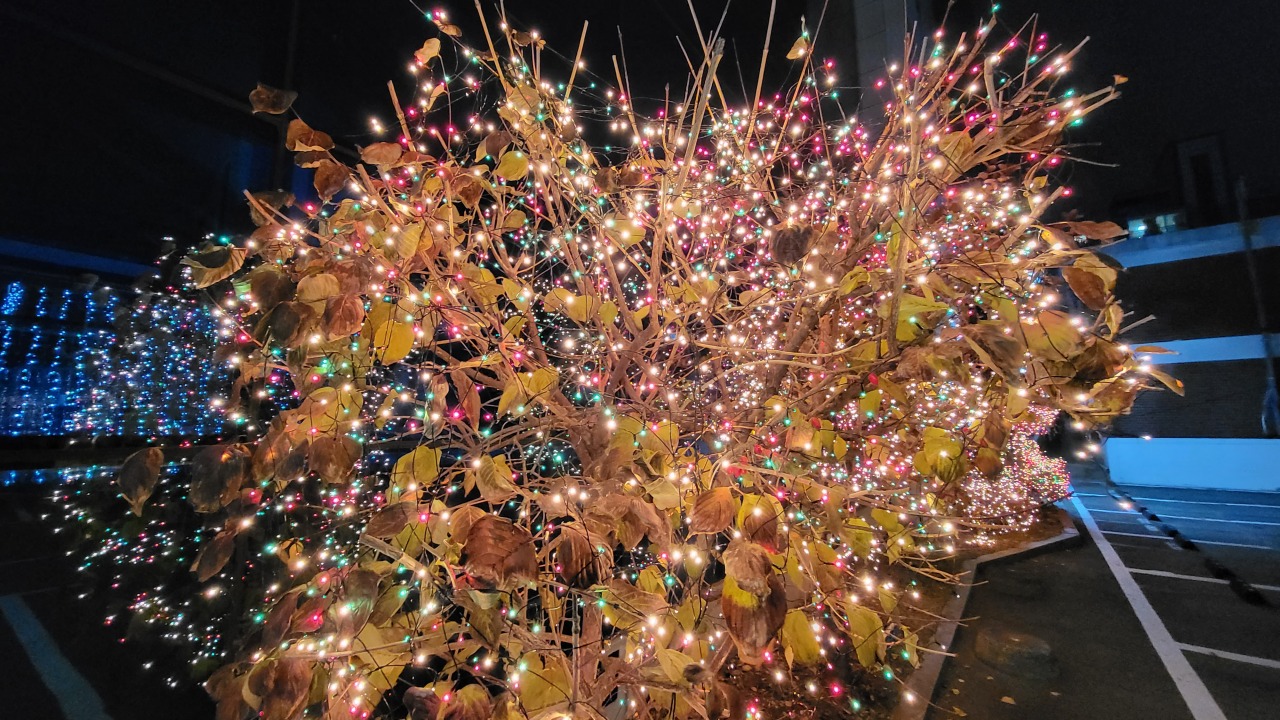“Excessive” use of artificial lights on trees during nighttime could harm trees and affect their growth, the National Institute of Forest Science said Wednesday, recommending LED decorations to be turned on for no more than six hours daily.
In a study, the state-run institute installed LED lights on three types of trees -- pine, king cherry and ginkgo -- and observed if it had effects on their nighttime breathing. Researchers exposed each tree to LED lights for six hours -- 6 p.m. to midnight -- and for 12 hours -- 6 p.m. to 6 a.m. the next day.
The study’s results showed that respiration levels were similar for pine trees exposed to six hours of light compared to those not exposed, regardless of the season. But the respiration level started to rise after six hours, and for pine trees with 12-hour exposures, respiration increased by 3.2 times in summer and 1.3 times in winter.

LED decorations are hung on trees in this undated file photo. (National Institute of Forest Science)
Plants take in carbon dioxide and absorb energy from sunlight through photosynthesis, after which atmospheric CO2 is incorporated into existing organic carbon compounds. At night they release carbon dioxide -- normally much less than the amount they take in during the day -- through respiration.
Researchers explained that an increase in respiration would mean trees store less carbon, which would dampen their growth and harm their health.
Similar results were observed for other trees, with 2.2 times higher respiration for the king cherry and 4 times for ginkgo.
“Light pollution effects all types of trees, and cities should minimize turning on the artificial lights for co-existence with nature,” said Lee Im-gyun, the head of Urban Forests Division of the NIFS. “It was found that the effects of artificial lights are bigger with high temperature, so it is vital to remove the decorative lights (from the lights) before plants start growing leaves in spring.”






